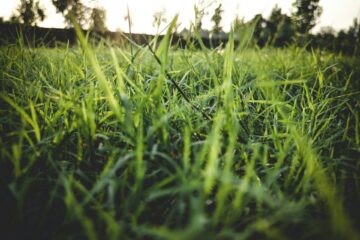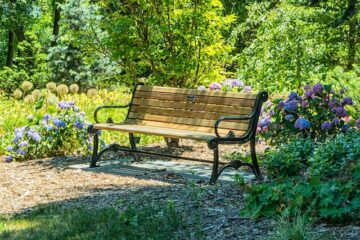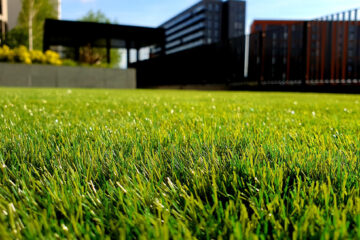For many homeowners, a lush green lawn is a central feature of their outdoor space—a place to relax, entertain, or simply enjoy the beauty of nature. However, traditional grass lawns come with challenges: high water usage, constant mowing, frequent fertilizing, and the use of harmful chemicals. Increasingly, environmentally conscious homeowners are seeking creative lawn alternatives that are low-maintenance, sustainable, and visually appealing. Fortunately, you don’t have to sacrifice beauty for eco-friendliness. In this article, we explore several innovative options like clover lawns, ornamental grasses, and diverse groundcovers that not only reduce upkeep but also enhance your garden’s aesthetic.
Why Rethink the Traditional Lawn?
Traditional turfgrass lawns are deeply ingrained in many cultures, symbolizing neatness and status. But their environmental footprint is significant. Lawns consume a huge amount of water, especially in hotter climates, require energy-intensive mowing, and often depend on synthetic fertilizers and pesticides that can harm pollinators and contaminate soil and waterways.
By switching to alternatives, homeowners can:
- Reduce water consumption
- Lower maintenance time and cost
- Create habitats for pollinators and beneficial insects
- Avoid chemical inputs
- Enhance biodiversity and soil health
Let’s explore some standout options.
1. Clover Lawns: Soft, Green, and Pollinator-Friendly
Clover varieties, particularly white Dutch clover, are a popular and effective lawn alternatives. They remains lush and green throughout the growing season, has a soft texture, and grows densely enough to crowd out weeds.
Benefits:
- Low maintenance: Clover requires far less mowing — once every two to three weeks — and no fertilizing, as it fixes nitrogen from the air.
- Drought tolerant: It uses less water than traditional grass.
- Pollinator magnet: Its small white flowers attract bees and other beneficial insects, supporting local ecosystems.
- Cost-effective: Often cheaper to establish and maintain than turfgrass.
Considerations:
- Clover can have a different look than grass which some homeowners may need time to get used to.
- It doesn’t wear well under heavy foot traffic but is ideal for low-use areas, front yards, or mixed planting beds.
2. Ornamental Grasses: Movement and Texture
Ornamental grasses offer a graceful, natural alternative that brings year-round interest to your lawn or garden space. Varieties like Blue Fescue, Feather Reed Grass, or Fountain Grass provide texture, movement, and colour changes with the seasons. All are ideal as lawn alternatives.
Benefits:
- Low water: Most are drought tolerant once established.
- No or minimal mowing: Grasses may only need cutting back once a year.
- Aesthetic appeal: They add verticality, softness, and rustling sound in the breeze, creating a peaceful environment.
- Wildlife support: Seed heads on grasses provide food for birds in winter.
Considerations:
- Ornamental grasses grow in clumps rather than a thick carpet, so for a full “lawn” effect, you may need to mix them with other groundcovers or design your landscape to embrace open spaces.
- Some species may spread aggressively, so choose cultivars suited for your region and garden size.
3. Groundcovers: Diverse, Colourful, and Resilient
Groundcovers can create a near-continuous green carpet that is both attractive and eco-friendly. There are numerous species suited for lawn replacement depending on your climate, soil type, and sunlight availability.
Popular options include:
- Creeping Thyme: Fragrant, hardy, and produces small purple flowers; perfect for sunny, well-drained spots.
- Sedum: Succulent varieties thrive in poor soils and drought conditions, offering interesting textures and colours.
- Mazus: A fast-spreading, low-growing carpet that tolerates foot traffic and thrives in shady areas.
- Irish Moss (Sagina subulata): Forms a dense, bright green mat, ideal for shady, moist soils.
Benefits:
- Variety: Choose colours and textures that complement your landscape palette.
- Low height: Usually only a few inches tall, no mowing required.
- Erosion control: Excellent for slopes and uneven terrain.
- Wildlife friendly: Many groundcovers offer nectar and pollen for pollinators.
Considerations:
- Some groundcovers can be damaged by heavy foot traffic; they work best in low-use areas or as a border.
- Take care to select species adapted to your local conditions for long-lasting success.
4. Mixed Plantings and Native Meadows
Another approach worth considering is replacing all or part of your lawn with a mixed planting of native grasses, wildflowers, and other low-growing plants. These “meadows” provide maximum ecological value, support pollinators and wildlife, and require minimal watering once established.
Features:
- Mimic natural ecosystems.
- Draw beneficial insects and birds.
- Seasonal blooms create a dynamic and colourful garden display.
- Reduced maintenance, no fertilizers or pesticides needed.
Considerations:
- Establishment time is longer than traditional lawns.
- Regular management needed during early years to control weeds.
- Not ideal for high-traffic play areas.
Tips for Transitioning
- Start small by converting difficult-to-maintain patches rather than your entire lawn at once.
- Prepare the soil by removing existing turf and improving drainage as needed.
- Choose plants suited to your climate zone and sun exposure.
- Incorporate mulch or natural stone pathways to encourage deliberate foot traffic.
- Consult local extension services or native plant societies for region-specific recommendations.
Conclusion
Replacing or supplementing your traditional lawn doesn’t mean sacrificing beauty or functionality. From the soft, pollinator-friendly charm of clover lawns to the graceful elegance of ornamental grasses and the colourful, textured appeal of groundcovers, there are plenty of creative alternatives to explore. These options promote sustainability, reduce maintenance, and foster biodiversity in your outdoor space. By moving beyond the mow, you can create a stunning, eco-conscious landscape that you—and the environment—will love.
Whether you want a serene backyard retreat or a vibrant front-yard statement, consider these lawn alternatives for a fresh, green approach to landscape design. Your lawn—and the planet—will thank you!
Keep on top of your gardening with our free online journal
Our free online tool allows you to organise your ideas and garden plans and help you be as efficient as possible in the garden.
Sign up now

